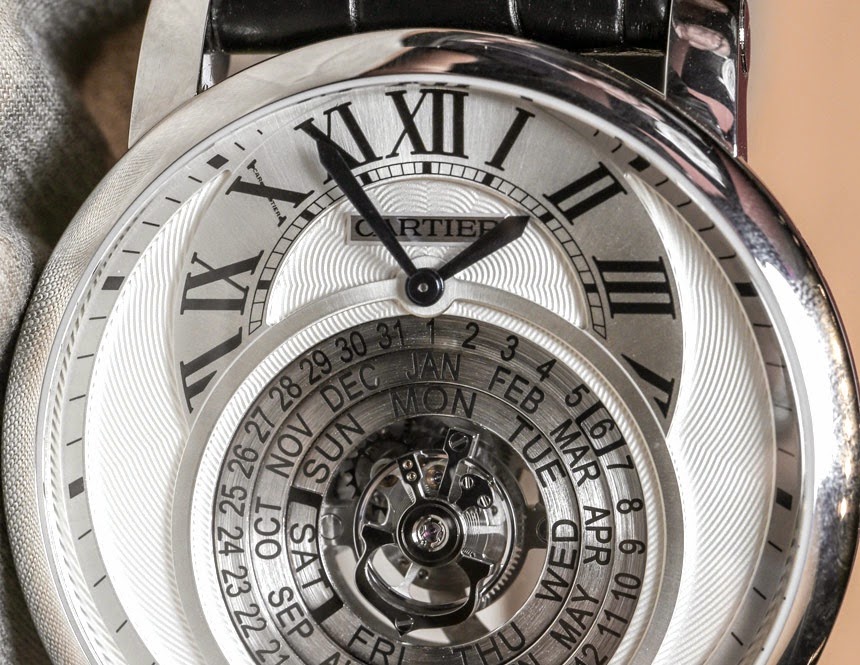One model Cartier unveiled in the 2014 SIHH is the Rotonde de Cartier Astrocalendaire. The Astrocalendaire's primary feature needs to function as the multi-tier, concentrically organized perpetual calendar. As fancy as that sounds, it makes sense stunningly straight-forward: situated near the center from the watch, three rings are all around the flying tourbillon, with every one of them devoted towards the indication from the day, the month and also the date, correspondingly. Because of this configuration - similar to ancient Roman amphitheaters - Cartier's perpetual calendar offers legibility that couple of other watch do.
On the 3 tiers the precise date is marked by blued brackets that appear to drift within the rings' markings. Reading through information in the three tiers and their rectangular frames does suffer in certain poor lighting conditions, but how a rings are stacked so close together creates a faster and simpler reading through in comparison to many other calendar watches. With that said, one indication is missing - although it might not be instantly apparent for individuals having a weak place with this complication -, the display of leap years. Visible with the transparent case back, the leap and non-leap years are shown by a hand focused on among the movement's bridges.
Abnormally covered up by additional factors - but situated in the heart of attention nevertheless - may be the flying tourbillon, sporting the well-known capital "C" on its bridge. The in-house designed and manufactured movement, entitled 9459 MC, is really put together in Cartier's haute horlogerie workshop in Geneva so it is qualified for that Geneva Seal.
Behind its favorable legibility and apparent simplicity, the Astrocalendaire is outfitted having a complex system that serves both protection and the simplicity from the calendar mechanism. What Cartier describes like a "partly patented gear train mechanism", basically is really an alternative to many levers and is derived which are utilized in nearly all perpetual calendar's systems. The significance of this new product is found in the fragility from the classical solutions, where one risked seriously harmful the calendar by over-winding the movement or attempting to alter the date "at inadvisable occasions" - often a couple of hrs before and after night time once the mechanism reaches work.
As with the case of nearly all highly and distinctively complicated Cartier movements, the Astrocalendaire had been produced by Carole Forestier-Kasap. Beyond allowing the multi-tier display and also the protective equipment train mechanism with this caliber, she and her team also developed a new setting-mechanism which should make modifying the calendar's shows simpler in comparison to many perpetual calendar watches. Nearly all such watches have many small pushers set in to the side from the case, that your day, month along with other signs could be set.
Within the case from the Astrocalendaire, the individual can set time, the date and also the month with the crown, and achieve this both in "directions", forwards and backwards. Whilst not unique for this watch - or manufacture -, it's a struggle to attain such simplicity of use having a mechanism as complex and fragile because the perpetual calendar. The down sides involved are further proven because even just in the case of the in-house developed caliber, basically among the calendar's functions are positioned while using crown. Your day continues to be modified with a small pusher occur alongside it from the case.
Located inside a 47 mm wide platinum case the Astrocalendaire is really a limited edition of just 100 pieces and it is listed at €150,000 or around $205,000.
Welcome to my page website:http://www.reeftiger.co.uk/
Thank you for visiting



No comments:
Post a Comment